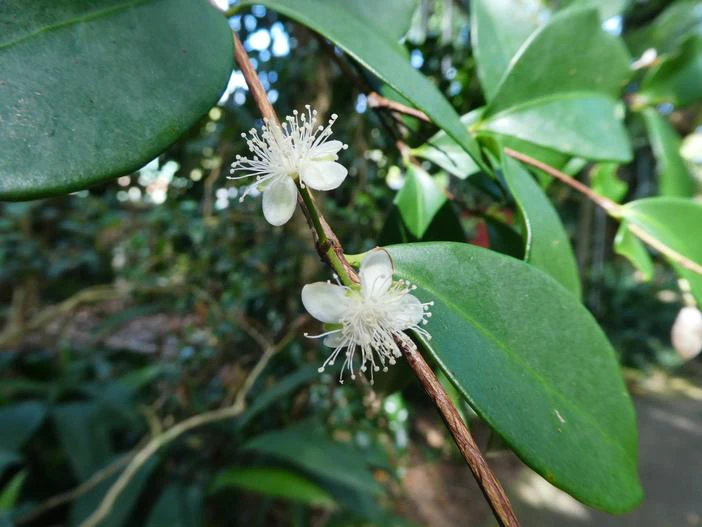Mountain Stopper
(Eugenia reinwardtiana)
Mountain Stopper (Eugenia reinwardtiana)
/
/

Steve Fitzgerald
CC BY-SA 4.0
Image By:
Steve Fitzgerald
Recorded By:
Copyright:
CC BY-SA 4.0
Copyright Notice:
Photo by: Steve Fitzgerald | License Type: CC BY-SA 4.0 | License URL: https://creativecommons.org/licenses/by-sa/4.0 | Uploader: Junglenut | Publisher: Wikipedia Commons































Estimated Native Range
Climate Requirements
| • Precipitation | 26" - 185" |
| • High Temp. | 73°F - 99°F |
| • Low Temp. | 45°F - 75°F |
Summary
Eugenia reinwardtiana, commonly known as Mountain Stopper, is an evergreen shrub or small tree native to coastal rainforests and monsoon forests in Australia, Papua New Guinea, and parts of Southeast Asia. It typically grows to a height of 2 to 6 meters (6.6 to 19.7 feet) and has a bushy habit with dense foliage. The leaves are glossy and when crushed, emit a spicy aroma. The white flowers, which appear in summer, are small but numerous, creating a showy display against the dark green leaves. Following the flowering season, the plant produces round fruits that are initially green and ripen to a bright orange-red color. The fruits are edible, with a sweet taste and soft flesh, and are often eaten fresh or used in jams.
Mountain Stopper is valued for its ornamental features, including its attractive foliage, fragrant leaves, and edible fruits. It is suitable for urban planting, such as in median strips, and is also used as a hedge or screen in tropical gardens. The plant is drought-tolerant once established and can thrive with low water requirements. It prefers well-drained soils and can tolerate a range of soil types, from sandy to loamy. Full sun to part shade is ideal for optimal growth. Propagation is commonly done through fresh seeds, which germinate readily. While generally pest-resistant, it can occasionally suffer from scale insects or sooty mold.CC BY-SA 4.0
Mountain Stopper is valued for its ornamental features, including its attractive foliage, fragrant leaves, and edible fruits. It is suitable for urban planting, such as in median strips, and is also used as a hedge or screen in tropical gardens. The plant is drought-tolerant once established and can thrive with low water requirements. It prefers well-drained soils and can tolerate a range of soil types, from sandy to loamy. Full sun to part shade is ideal for optimal growth. Propagation is commonly done through fresh seeds, which germinate readily. While generally pest-resistant, it can occasionally suffer from scale insects or sooty mold.CC BY-SA 4.0
Plant Description
- Plant Type: Tree, Shrub
- Height: 3-10 feet
- Width: 3-5 feet
- Growth Rate: Moderate
- Flower Color: White
- Flowering Season: Summer
- Leaf Retention: Evergreen
Growth Requirements
- Sun: Full Sun, Part Shade
- Water: Medium, High
- Drainage: Medium
Common Uses
Bee Garden, Bird Garden, Butterfly Garden, Drought Tolerant, Fragrant, Groundcover, Hedges, Low Maintenance, Street Planting
Natural Habitat
Coastal rainforests and monsoon forests
Other Names
Common Names: Cedar Bay-Cherry, Beach-Cherry, Australian Beach
Scientific Names: Eugenia reinwardtiana, Eugenia rariflora, Eugenia carissoides, Eugenia koolauensis var. glabra, Jossinia desmantha, Eugenia reinwardtiana f. lutea, Eugenia costenoblei, Jossinia reinwardtiana, Eugenia kangeanensis
GBIF Accepted Name: Eugenia reinwardtiana (Blume) DC.